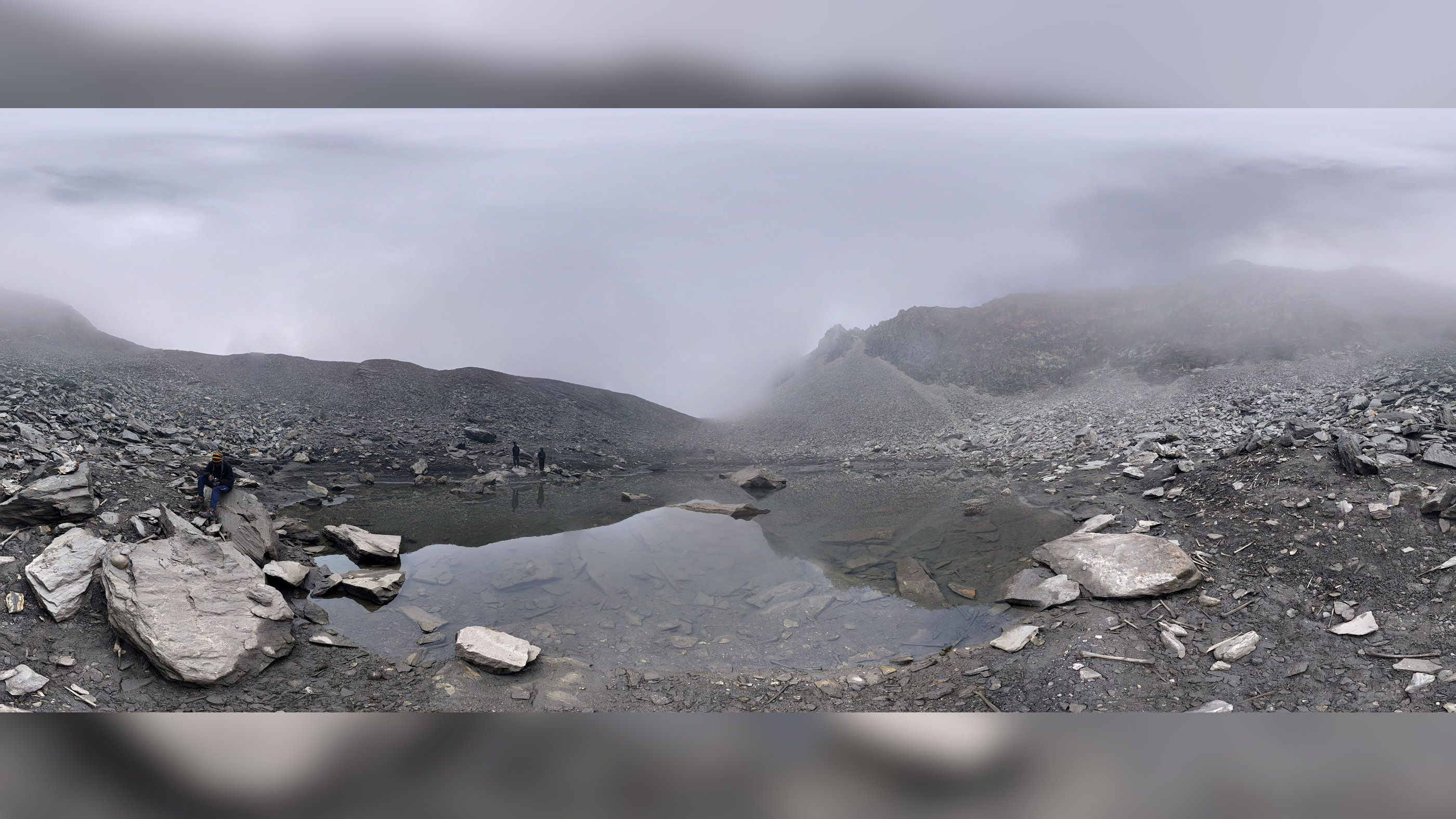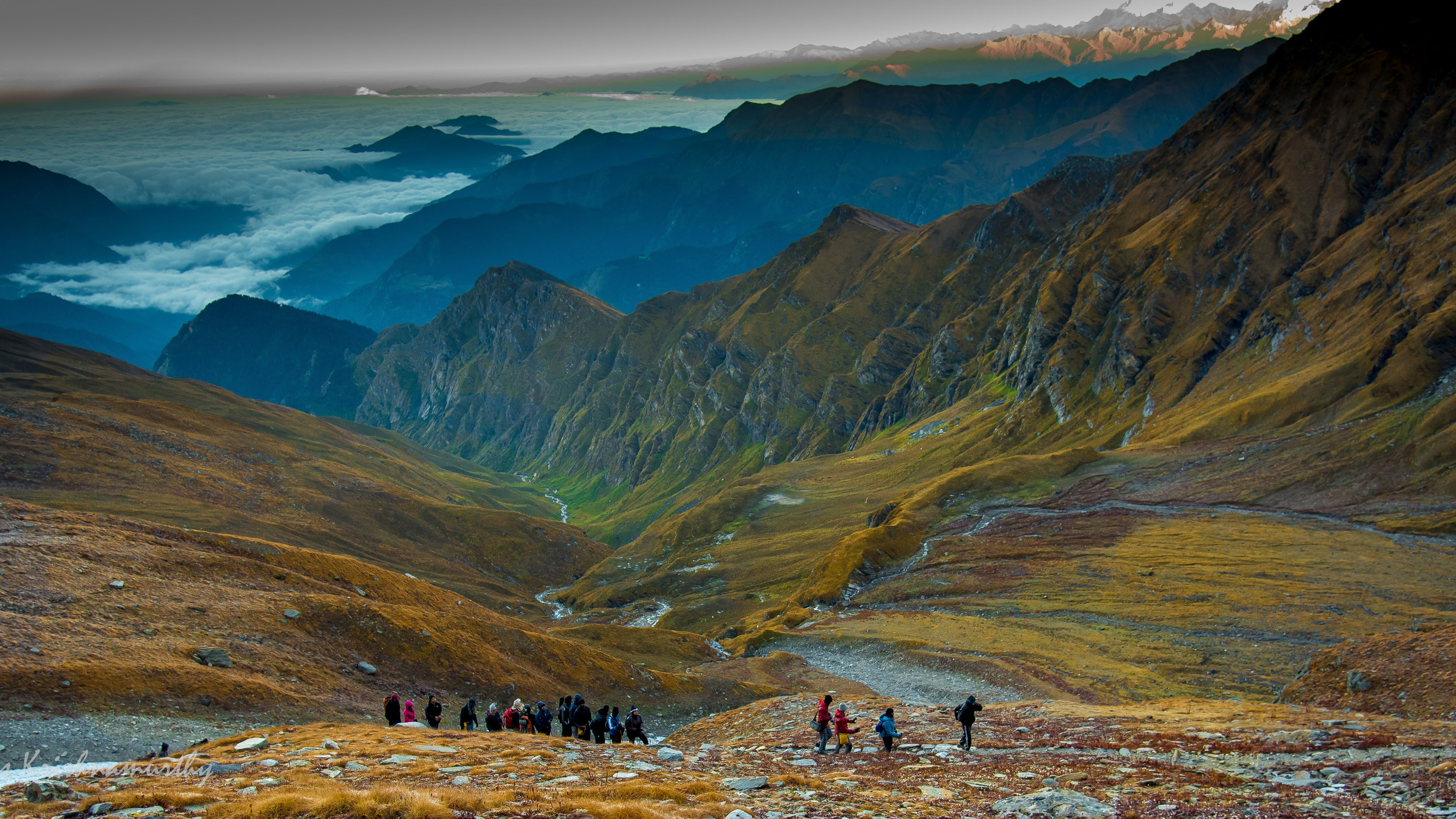Hundreds of skeletons fill this remote Himalayan lake. How did they get there?

High in the Indian Himalayas, a four-to-five-day trek from the nearest village, sits an unassuming glacial lake called Roopkund. The spot is beautiful, a dollop of jewel-toned water amid rough gravel and scree, but hardly out of the ordinary for the rugged landscape — except for the hundreds of human bones scattered within and around the lake.
These bones, belonging to between 300 and 800 people, have been a mystery since a forest ranger first reported them to the broader world in 1942. Lately, though, the mystery has only deepened. In 2019, a new genetic analysis of the ancient DNA in the bones, detailed in the journal Nature Communications, found that at least 14 of the people who died at the lake probably weren't from South Asia. Instead, their genes match those of modern-day people of the eastern Mediterranean.
Related: 11 famous places that are littered with dead bodies
What's more, these bones were far newer than most of the others at the lake, which date to around 800; the people with apparent Mediterranean heritage seem to instead have died around 1800. So what on Earth was a group from the Mediterranean doing above 16,500 feet (5,029 meters) in a far-flung corner of the Himalayas? And how did they die?
Deadly ridge
Those questions are at the heart of a new article in The New Yorker by Douglas Preston, as well as a subsequent webinar discussion led by Preston and Princeton University anthropologist Agustín Fuentes and hosted by the School for Advanced Research in New Mexico.
The story of Roopkund illustrates the need for multiple lines of evidence when investigating the past. The bones alone are mystifying: They belong to both men and women, mostly young adults, who seem to have died in several bouts, perhaps over dozens or hundreds of years.
Oral histories passed down by the villagers nearby offer more illumination. The lake is on a pilgrimage trail for Nanda Devi, a manifestation of the Hindu goddess Parvati. According to local legend, a distant king once angered Nanda Devi, causing her to unleash drought upon his kingdom. To appease the goddess, the king set off on a pilgrimage that took him and his entourage past Roopkund, in what is now the state of Uttarakhand. But the foolish king brought dancers and other luxuries on the trek, intensifying Nanda Devi's rage. She conjured a terrible hailstorm and killed the entire party, the legend goes.
Get the world’s most fascinating discoveries delivered straight to your inbox.
Related: 25 grisly archaeological discoveries
This tale may not be far from the truth. Some of the victims at Roopkund have skull fractures that look like the result of blunt-force trauma, research has found. The current best guess for what happened to most of the dead? They were caught on the ridge above the lake in horrendous storms, some of which may have included deadly hail. Most of the victims likely died of exposure and hypothermia; they ended up in and around the lake because their bodies either rolled downhill or their remains sloughed down the hillside in the frequent mini-avalanches common on the slope.
Ongoing mystery
There's no consensus, however, on what a group of people of apparent Mediterranean heritage was doing in such a remote corner of the Himalayas around 1800; there's no historical record of a long-range expedition to the region then, Preston said.
The finding hints at the limits of ancient DNA analysis, Fuentes said in the Feb. 3 webinar. The analysis compared the DNA of the skeletons at the lake with the DNA of modern-day populations. But people have moved around quite a lot in the intervening 200-plus years, making it a little difficult to say exactly where the dead at the lake came from. They may not have hailed directly from the eastern Mediterranean, Fuentes said; they could have been from closer to Roopkund but shared common ancestors with the people who ended up populating the eastern Mediterranean.
There is non-DNA evidence that the people in the mystery group weren't like the others who died at the lakes, though. The 2019 analysis also found that this group had a different diet, with less millet, than the people whose genetics suggested a South Asian origin.
One theory is that the mysterious dead at Roopkund could have been from an isolated population of Central Asians who descended from Alexander the Great and his armies. The Kalash, an ethnic group in Pakistan, owe some of their ancestry to these conquerors, Harvard University geneticist David Reich and his colleagues wrote in their 2019 paper. But the mystery dead don't have genetics like the Kalash, which mix eastern Mediterranean genetic markers with South Asian markers, and they don't show any of the signs of inbreeding that would be evident if they didn't mix with the wider South Asian population around them.
"Combining different lines of evidence, the data suggest instead that what we have sampled is a group of unrelated men and women who were born in the eastern Mediterranean during the period of Ottoman political control," the researchers wrote. "As suggested by their consumption of a predominantly terrestrial, rather than marine-based, diet, they may have lived in an inland location, eventually traveling to and dying in the Himalayas. Whether they were participating in a pilgrimage, or were drawn to Roopkund Lake for other reasons, is a mystery."
Part of the reason this mystery persists, Preston said, is that Roopkund has not actually been well studied. The lake is on a relatively popular trekking route, and hikers over the decades have moved bones, stacked them and even stolen them. Because of the tempestuous weather and high elevation, no systematic studies of the remains and their location have been done.
Some day, though, that might change. For his article in The New Yorker, Preston interviewed Veena Mushrif-Tripathy, a bioarchaeologist at Deccan College in India who hopes to investigate Roopkund scientifically. It's likely that there are bodies within the lake that haven't been disturbed, Mushrif-Tripathy told Preston. Soft tissue and artifacts might even be preserved in the cold water. If researchers can launch such an expedition, they might be able to illuminate the lives of some of those who died at the lake.
Originally published on Live Science.
Editor's Note: This story was updated at 7:00 p.m. E.T. on Wednesday, Feb. 24 to note that Roopkund is in Uttarakhand, India.

Stephanie Pappas is a contributing writer for Live Science, covering topics ranging from geoscience to archaeology to the human brain and behavior. She was previously a senior writer for Live Science but is now a freelancer based in Denver, Colorado, and regularly contributes to Scientific American and The Monitor, the monthly magazine of the American Psychological Association. Stephanie received a bachelor's degree in psychology from the University of South Carolina and a graduate certificate in science communication from the University of California, Santa Cruz.





